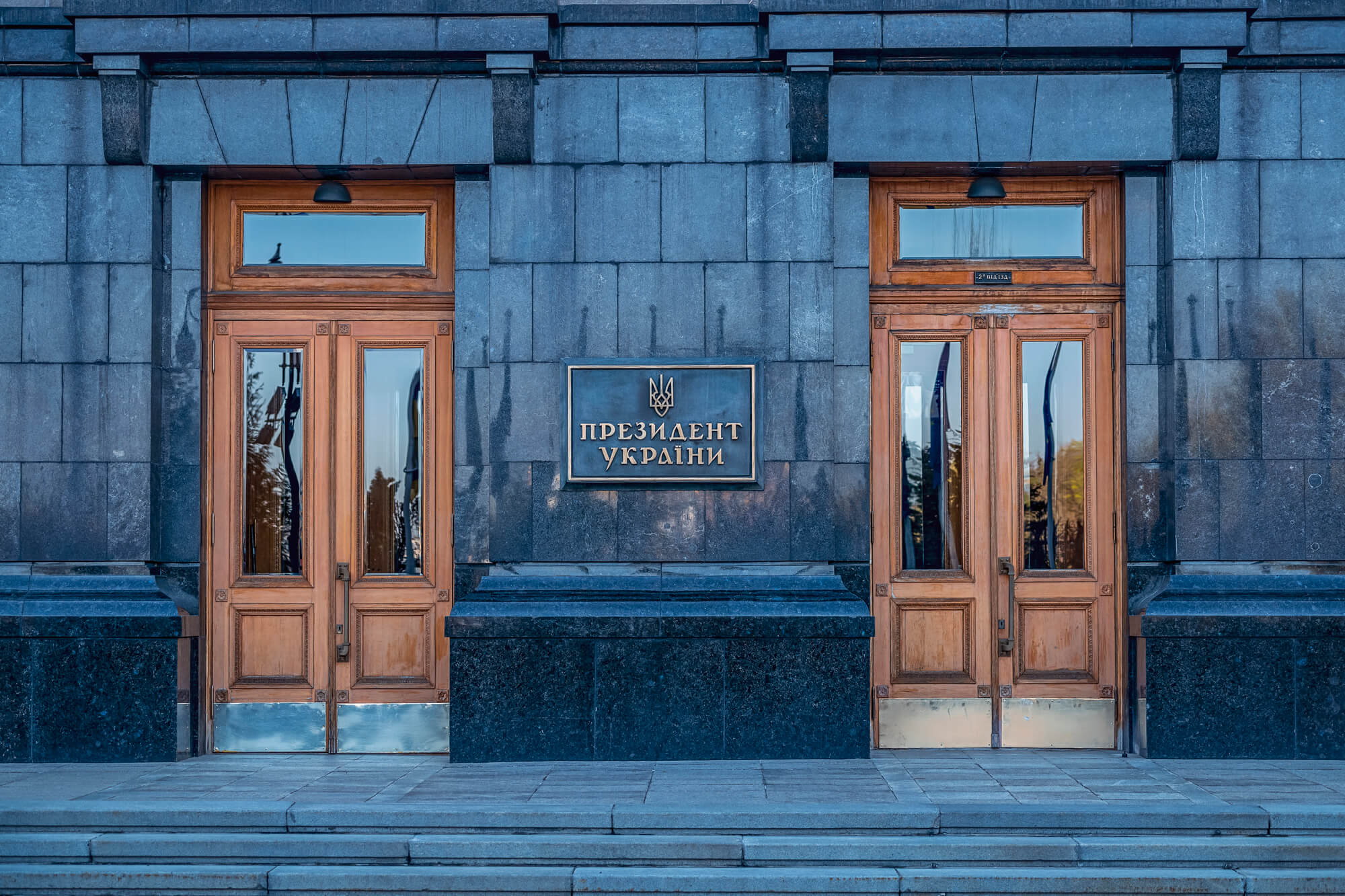Hardly anyone would disagree that the aggressor should pay for the damage it has done to Ukraine and its economy. However, how to turn this idea into practice? In this article we discuss the methods to evaluate damage to human health, culture and nature.
Regardless of whether Ukraine wins the war, or it ends in a stalemate or at the negotiating table, the long-term costs of the war to Ukraine’s economy, public health and reconstruction will be enormous. In a powerful address to the UN General Assembly on Sep 21, 2022, President Zelensky declared that Russia “should pay for this war with its assets”.
Of course, Russia must pay for its relentless criminal assault on Ukraine, unleashing untold depravity and devastation during the past year of total war. This “payment” can be in several forms: reparations for infrastructure damage and compensation is for war crimes suffered by Ukrainians. Besides, those who committed these heinous crimes must be brought to justice, likely to be conducted by an international tribunal.
The UN General Assembly took up Zelensky’s plea on Nov 15, 2022, calling for Russia to be held accountable for its conduct in Ukraine and violation of international law. They voted to approve a resolution recognizing that Russia must make reparations to Ukraine. This will enable Western powers to invoke the UN resolution as a basis for transferring frozen Russian Central Bank reserves to Ukraine.
Serhiy Kyslytsia, Ukraine’s UN Ambassador, introduced a draft resolution noting that the Soviet Union demanded and received reparations 77 years ago as the moral right of a country which has suffered war and occupation. Today, the Russian Federation is doing everything it can to avoid paying the price for its own war and ruinous occupation of Ukraine.
During the first Gulf War in 1991, Iraq set fire to hundreds of oil wells in Kuwait and dumped millions of gallons of oil into the Persian Gulf. Kuwait sought reparations from Iraq. The UN Compensation Commission ordered Iraq to pay nearly $53 billion for the damages it caused, $3 billion of which went for environmental and human health related damages.
Russia’s war crimes of choice
This is Russia’s imperial war of choice. Russia and Putin must be held accountable at all levels – for war crimes, infrastructure damage and social, cultural, economic, ecological and inevitable chronic health damages of Ukraine’s army and populace that will emerge years after the conflict. In fact, the cumulative widespread health and psychological damages may be much worse than those of the Chornobyl nuclear disaster, because they will affect millions more people.
Wars of this extent, duration and magnitude release and activate a much broader and more lethal range of toxic pollutants that will contaminate the air, water and soils of Ukraine, exposing millions to the multitude of harmful effects for generations.
Seizing and deploying Russia’s frozen assets to compensate victims of war crimes and funding reconstruction of Ukraine’s destroyed infrastructure will not be easy, though. Holding Assad and Russia to account for their war crimes in Syria is a recent example of those difficulties. Yet, Russia’s frozen assets (Central Bank and oligarchs) are considerable, estimated at more than $360 billion, and worth pursuing. Ukraine, the UN, EU and the U.S. are actively looking for ways to do so.
An important step would be to designate Russia a terrorist state, because it comprises the legal basis for seizure of Russia’s assets. President Zelensky proclaimed that “the Russian state has become the largest terrorist organization in the world.” There is strong bipartisan support in Congress for such a designation and the European Parliament voted on a resolution in November, 2022, designating Russia as a terrorist state.
Even as the war progresses, policy-makers are examining the cost of post-war reconstruction – a figure Ukraine estimated at over $750 billion and the European Investment Bank believes it could be as high as €1 trillion. By the end of the war, this figure could be substantially higher.
Russia is unlikely to willingly pay for the wanton devastation it has wrought on Ukraine. The EU and the U.S. will likely bear much of the cost of rebuilding Ukraine, not least because it is a candidate for EU membership.
Eight Classes of War Crimes
Seeking justice for war crimes and genocide is paramount for three reasons: due process to compensate victims of crimes; reparations to Ukraine for widespread infrastructure damage; and punishment for the perpetrators. There are numerous tortuous and lengthy legal paths that exist in the realm of international law governing such crimes. After all, trials for war criminals in Kosovo’s 1998 war only commenced at the Hague in late 2021.
Russia’s war crimes have eight distinct components, each with its own set of rules, rationale, accounting procedures and remediation and enforcement mechanisms. The most common crimes investigated are:
1) war crimes against civilians (torture, rape, brutality, executions);
2) war crimes against military combatants and
3) deliberate destruction of civil infrastructure.
What is often discounted in the ledger of war crimes are:
4) socio-economic damages (loss of income, businesses, agriculture, industrial production, housing, schooling, shattered social services networks, and poverty);
5) chronic health damages (military and civilian);
6) damages to cultural sites (museums, libraries, historic structures);
7) ecosystem degradation (e.g. destruction and pollution of aquatic habitats, endangered species, fires in ecozones, unexploded mines); and
8) harm to public well-being and mental health and psychological trauma associated with combat-related carnage, terror and daily combat-related stresses – be it fear of bombardment, loss of shelter, loss of livelihood, deportation, rape, looting, torture, hunger or incarceration. This category is the equivalent of PTSD (post traumatic stress disorder) for the civilian populace.
Categories 4-8 are considered war crimes because Russians deliberately targeted civilian populations and critical infrastructure as part of a ruthless campaign of terror. Estimating damages to Ukraine’s civil infrastructure is the most straightforward task, and a priority for getting Ukraine’s industry and businesses functioning as soon as possible so that the economy could rebound quickly.
Estimating damages for categories 4-8 is more complicated, however, but methods that are routinely used by economists have been developed to quantify such damages. The more difficult assessments will be those quantifying and valuing long-term damage costs to the socio-economic infrastructure; destruction of cultural assets; long-term human health impairment and increased morbidity, along with degraded ecosystems and deteriorated biodiversity. Extracting compensation from Russia for those damages will be even more challenging.
War-crimes and Genocide
On Feb 24, 2022 the world was treated to a grotesquely absurd spectacle, as Russia, serving as the president of the UN Security Council, launched an invasion of Ukraine while the Security Council was holding an urgent meeting to resolve the crisis. Subsequently, Russia has repeatedly and flagrantly demonstrated contempt for all international laws and norms in its continued ruinous aggression against Ukraine.
The top priority for accountability is to seek justice for Russian war crimes against Ukrainian civilians, military combatants and prisoners of war and punishment for the perpetrators. Existing international laws governing military conduct during a war seek to protect civilians from barbarity and collateral damage. The paramount principle of war is that only military targets are acceptable.
Ukraine has over 20,000 investigations underway, even as the war rages on, with many international agencies assisting Ukraine’s agencies. Ukraine’s prosecutors have deployed across the country collecting evidence, as well as the UN Independent International Commission of Inquiry on Ukraine and investigators from the International Criminal Court.
The issue of individual and collective responsibility arises with respect to seeking justice for war crimes and genocide. Will Putin be held personally responsible for genocide? Central to answering this question is establishing whether Russia has the intent to destroy Ukrainians as a national group, either in whole or in part. Putin’s speeches and actions clearly indicate this intent, and many UN members believe that Putin has crossed the line into genocide.
An option for speeding up the war crimes trials is to have an international tribunal, akin to the Nuremberg trials after WWII. Existing legal mechanisms, such as the International Criminal Court in the Hague, result in very slow processes towards justice. They would likely be limited in their ability to hold the Russian Federation and individual Russian leaders fully accountable for their actions.
Estimating Costs of Infrastructure Destruction
During the past year, there has been a relentless barrage of Russian missiles and drone attacks on civilian infrastructure in violation of international law. It has crippled Ukraine’s energy generation and transmission network. Ukraine survived Russia’s winter of terror, but at great cost, with at least one quarter of the populace freezing in the dark.
In June, 2022, Ukraine produced a report detailing the costs of repairing the damages incurred as a result of Russian destruction. Ukraine’s Draft Recovery and Development Plan covered the 2022-2032 period, estimating at least $750 billion (excluding funding for security and military expenditures) in damages. $350 billion are for recovery and reconstruction attributed to war damages, and $400B for future infrastructure improvements.
The initial phase of crucial infrastructure reconstruction called for $60-65 billion, including demining 5 percent of the country’s territory, preparation of the energy system for the winter, renovation of twenty thousand homes and residential buildings and the construction of one hundred thousand new houses. Unfortunately, the Plan is yet to be implemented because of constant repairs needed to deal with Russia’s persistent bombing of infrastructure.
The World Bank’s Rapid Damage and Needs Assessment provided estimates that are consistent with those of Ukraine’s Recovery Plan. It also laid out the roadmap and financing needs for recovery and reconstruction.
Both assessments were made well before the merciless bombardment during the fall and winter months of 2022. Hence, it is more likely that updated damage estimates are more in line with Ukraine’s original assessment of $750 billion, and may well exceed one trillion dollars by the time all damages are fully accounted for, as estimated by the European Investment Bank.
Calculating Socio-economic Consequences of War
At the UN Security Council meeting on Sept 21, 2022, UN Secretary General António Guterres blamed Russian bombardments of urban areas for killing thousands of Ukrainian civilians, including hundreds of children. “Almost every child in Ukraine has been scarred by the nightmare of war,” he said. OECD called the Russian invasion of Ukraine “a major humanitarian crisis affecting millions of people and a severe economic shock of uncertain duration and magnitude”.
The war has displaced over 13 million people, out of a population of 43 million. This mass migration has disrupted the industrial and agricultural economy, placing great humanitarian burdens on receiving nations as well as internally on fractured governmental services. A World Economic Forum report estimates that since the full-scale war started, half of all Ukrainians have lost their jobs. Currently unemployment is at 30%.
The Ukrainian economy in 2022 shrank by 30%, which is better than initial World Bank estimates of 45%. However, the longer the war lasts, the larger is the population at risk of falling below the poverty line. The war will clearly erase 20 years of economic growth and achievement of social welfare institutions in Ukraine since the Orange Revolution of 2004.
Mental Health and Psychological Trauma
Millions of Ukrainians are experiencing mental health struggles dealing with the trauma of war. Fear, deprivation, constant stress and anxiety, hopelessness, shock and depression are prevailing emotions. Women, children, the elderly and people with disabilities are most vulnerable and most in need of help.
The U.S. Veterans Administration defines a traumatic event if an individual has suffered a serious injury, personal or sexual trauma, or sexual violation, or was threatened with injury, sexual assault, or death. That definition would include hundreds of thousands of Ukrainians who lived in the Russian occupied zones in Ukraine and were subjected daily to torture, death threats, assaults and sexual violence.
Post traumatic stress disorder (PTSD) is the most commonly diagnosed psychiatric disorder in military veteran populations, with estimated lifetime prevalence rates of 30% for Vietnam veterans, 12% for Gulf War veterans, and 14% for U.S. Iraq/Afghanistan-era veterans, which will likely grow as new cases are identified.
It is expected that both civilians and military personnel in the war zone will exhibit similar PTSD symptoms. An elaborate medical rating system has been developed by the doctors of the U.S. Veterans Administration to determine the degree of psychological injury and commensurate medical benefits. This system can be applied to Ukraine’s psychologically impaired populace to calculate damages for monetary compensation and medical care.
Appraising Human Health Damages
The long-term impairment of military and civilian health is an inevitable byproduct of wars. Appraisals of human health damages have been conducted for the impacts of wartime actions, based on the consequences for troops engaged in combat and combat related-activities in Iraq and Afghanistan.
There are two primary categories of health damages: direct impacts on health as a consequence of release of toxic chemicals by military operations, and the indirect effects of the loss of medical and health services to the affected populace that was chronically ill or suffered traumatic war-related injuries. The Russian invasion and occupation has greatly impeded access to treatment programs and medicines for that part of the population with chronic and infectious diseases.
More than 700 attacks on hospitals, health workers, and other medical infrastructure in Ukraine have been reported by the World Health Organization since February 2022. Countless people are affected by attacks against ambulances, health workers and hospitals. Critical care has been pushed into basements and other unsuitable places.
Continuity of care is essential in treating noncommunicable diseases, which are a leading cause of premature deaths in Ukraine. Two million Ukrainians were living with diabetes before Russia invaded. Many of them now have no access to insulin and are caught beyond functional supply lines.
In August 2022 the U.S. Congress passed legislation to compensate soldiers for war-related health damages, which will cost over $300 billion over the next decade [PACT Act]. This legislation can serve as a model for estimating the health damages attributable to war, as it adds 23 illnesses, including certain cancers and respiratory and lung diseases connected to toxin exposure in a broad array of military actions.
Accounting for Ecological Damages
Destruction of the environment and ecosystems is a war crime recognized by the United Nations. Work is underway at the UN to better define a set of legal principles that would guide future prosecution. The UN International Law Commission developed a set of 28 principles that clarify how international war laws apply to the environment and the conduct of invading and occupying forces, as well as responsibility for post-conflict reparations and reconstruction.
Since the start of the war the total number of cases of environmental damage exceeds 2,300, according to Ruslan Strilets, Ukraine’s environment minister. The ministry estimates the total cost at $51.45 billion (€48.33 billion), centering mostly on air and water pollution and damage to water supply and water treatment facilities.
The damages were calculated based on methods derived from standard U.S. and EU practices that covered the areas of forestry, agriculture, water quality, soil pollution and air pollution. They calculate costs based on the principle of lost production values – i.e. what it would cost to replace burned forests [timber value], or loss of production of contaminated agricultural lands, or costs to remediate the polluted soil, air or water by conventional methods.
In addition, Minister Strilets identified ecologically protected areas that were impaired or severely damaged by Russian forces. Ukraine is home to 35 per cent of Europe’s biodiversity. There is serious damage to 160 [of 271] ‘Emerald network’ sites, totaling 627,000 hectares. These ‘Emerald’ sites are part of a European system of protected conservation areas and natural habitats for endangered species. Also, 16 UNESCO Ramsar sites, totaling 2.9 million hectares, have been substantially impaired. These sites are wetlands designated to be of international importance under the Ramsar Convention, an intergovernmental environmental treaty established in 1971 by UNESCO.
Damages to biodiversity and habitats of rare and endangered species, or unique natural areas and bioreserves are very difficult to assess in monetary terms. Ecosystem services, like food webs or nutrient recycling, are services provided by nature for free. They represent ‘natural capital’, the equivalent to ‘capital stock’ such as a factory plant, its equipment, and other assets that help with production of services.
Two practical approaches for valuing natural habitats rely either on ‘restoration costs’ – i.e. the costs of rehabilitating a degraded ecosystem through restoration of its functions, or ‘replacement value’. ‘Replacement value’ examines the range of functions and services that the particular ecosystem provides to the food web that is dependent on that ecosystem. These functions, processes and services have comparable analogues in agro-businesses or water purification plants. A natural wetland essentially functions as nature’s water purification plant and food factory.
Calculating the loss of a genetic pool, biodiversity or endangered species is more complicated. The genetic pool is to biodiversity what the alphabet is to language, and biodiversity is to ecosystems what language is to literature and poetry. Like heritage or cultural values, the ‘intrinsic values’ of ecosystems reside in their genetic pool and biodiversity. Because biodiversity and species are not substitutable – once they become extinct, they are irreplaceable. It is like reading a classic poem with missing phrases.
Monetizing Damaged Cultural Heritage Sites
Valuing the destruction of Ukraine’s vast array of historic buildings, ancient churches, archaeological sites, monuments, artworks and public squares that are an integral part of Ukraine’s heritage and cultural identity is most difficult. Many have been reduced to rubble by Russia’s indiscriminate and wanton bombing. Many shopieces were stolen by occupants. For example, the Kherson Art Museum was systematically looted of 11,000 of its paintings and artifacts.
“Heritage” refers to historical or cultural assets inherited from past generations that have significance to ethnic groups or are uncommon, rare, or unique. Cultural values include aesthetic, symbolic, spiritual, social, historic, architectural or scientific attributes and features that have unique or special national significance. Unlike the loss of species and biodiversity, destroyed originals can be reconstituted as copies. Displaying a reproduction of Ukraine’s first Declaration of Independence in 1918, though, is quite different than possessing the original.
As of 1 March 2023, UNESCO has verified damage to 245 sites since February 2022: 106 religious sites, 20 museums, 88 buildings of historical and/or artistic interest, 19 monuments, and 12 libraries. UN agencies monitor this destruction using satellite photos. Additionally, there are hundreds of theaters, arts or cultural centers that have been destroyed or damaged.
Postscript
On Dec 21st, 2022, President Zelensky addressed a joint session of the U.S. Congress. He closed his compelling speech by saying “It is in your power, really, to help us bring to justice everyone who started this unprovoked and criminal war. Let’s do it. Let the terrorist state be held responsible for its terror and aggression and compensate for all losses done by this war”.
As the war progresses into 2023, Ukraine’s losses will continue to mount dramatically across all eight categories of war crimes committed by Russian forces. The estimates provided for reparations are likely to increase substantially by the end of the war. We should also account for a broad range of damages to human health, ecosystems or cultural and heritage assets, and for compensation to the victims of war crimes. Russia must pay reparations to Ukraine for the horrendous damage and misery that Putin inflicted on the Ukrainian people.
Attention
The authors do not work for, consult to, own shares in or receive funding from any company or organization that would benefit from this article, and have no relevant affiliations




